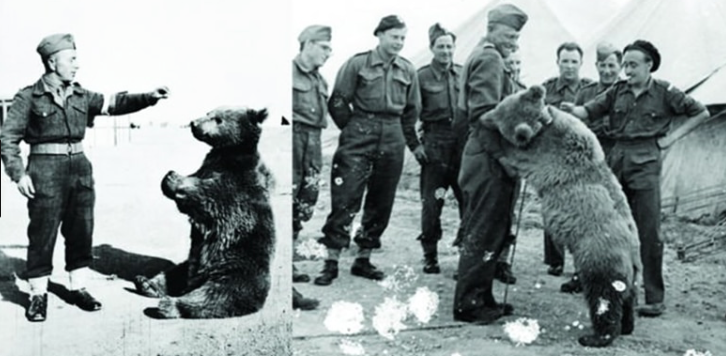A few years ago there was a minor kerfuffle that made its way into the pages of the daily press: the Royal Air Force Museum had handed over a Spitfire Mk.22 to aircraft restorers Kennet Aviation as payment for retrieving a gem from the Sahara. For it was in North Africa that an almost perfectly-preserved Curtiss P-40 Kittyhawk had been discovered, 70 years after it force-landed.
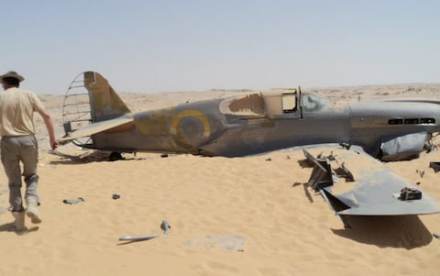
The Kittyhawk’s pilot, Flight Sergeant Dennis Copping, made a controlled landing in the desert which he survived. However, the Western Desert is a vast and inhospitable place in which Copping died without being rescued. His body has never been found.
Once Copping’s aeroplane revealed itself, however, preserving it became something of a fixation at the RAF Museum. In this quest, the museum believed that it had found the ideal partner in Tim Manna, a former US Navy reservist who moved to England in 1989 and now rebuilds old aeroplanes in Essex under the Kennet Aviation banner.
The RAF Museum agreed to trade a stored Spitfire Mk.22 with Kennet in return for the long-lost Kittyhawk. A Spitfire Mk.22 is not the most desirable of the breed, but a complete airframe with history holds value – somewhere around the £200,000 upwards mark – and with restoration to airworthiness that figure increases by four or five fold.
For the Spitfire in question, PK664, this would prove to be its 15 minutes of fame. It did not see service during World War 2 as it only reached No.39 MU in December 1945. It sat around for two years before being sent back to Vickers for upgrading with a Griffon 85 engine and 6-bladed contra-rotating propeller.
After another two years of standing idle, PK664 was refitted and finally issued to No.615 (County of Surrey) Squadron based at Biggin Hill in May 1949. In August 1949 it suffered an accident while in Germany, with the resulting damage being given RAF Category 3 – meaning indefinitely out of service. It was returned to 615 Squadron in early 1950, where it flew on until December of that year.
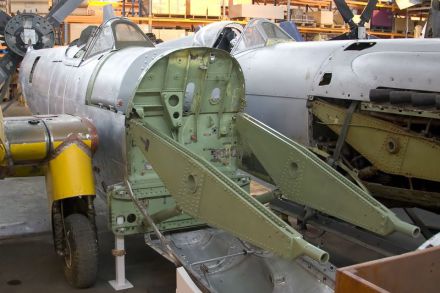
PK664 shown in storage at Wattisham in 2009
Shortly afterwards, PK664 went back into storage at Vickers pending disposal. Nobody wanted secondhand Spitfires in the late 1950s, however, so she was stuck on a plinth outside RAF Waterbeach as a gate guardian for most of the 1960s; being removed for maintenance and the occasional repaint. Later she was partially restored (and presumably given a Hamish Mahaddie makeover) for duty on the Battle of Britain movie. She then went into storage at RAF St. Athan for much of the next 23 years before being transferred to the RAF Museum. In recent years it was on display at the Science Museum, but departed for Kennet Aviation in 2012.
The only problem was that the Kittyhawk and the patch of sand in which it had lain for all those decades were in Egypt. And Egypt likes to have lots of paperwork and red tape around the place, so matters of this kind tend to be processed in a leisurely fashion. Meanwhile, there was something of a revolution going on and the Kittyhawk paperwork was an early casualty in the throes of Egyptian regime change.
Here the story ended, as far as the world was concerned. The RAF Museum was in some disgrace for handing over a Spitfire to Kennet without any apparent guarantees and it got nothing in return but a barrel load of tabloid invective for perceived naïvety and ineptitude.
Two years later, the RAF Museum is being treated to a second helping of opprobrium in the press after the Egyptian-run El Alamein Museum proudly put its newest exhibit on display – Flight Sergeant Copping’s Kittyhawk.
Rather than preserving the lightly-damaged machine, it has been treated to a restoration that looks like the first 1/72 kit ever attempted by the S&G. Aged seven. Missing panels and the absent propeller have been replaced with ungainly fibreglass and wood structures, then the whole lot has been vigorously painted in an approximation of RAF Desert camouflage – which this P-40 never wore. Like many RAF aircraft in the desert, it retained the Temperate Land Scheme of Dark Green and Dark Earth over Sky… like this model of an earlier Tomahawk is sporting… and it never had the shark’s mouth markings, either.
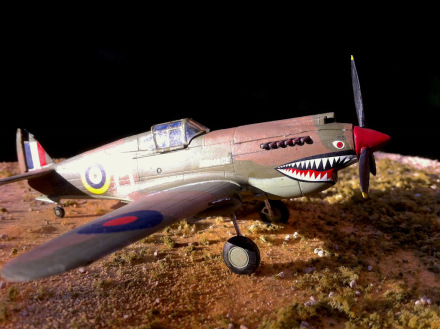
But the Egyptians prefer the drama of shark’s teeth, Mid-Stone and Azure Blue (or approximations thereof), resulting in this:
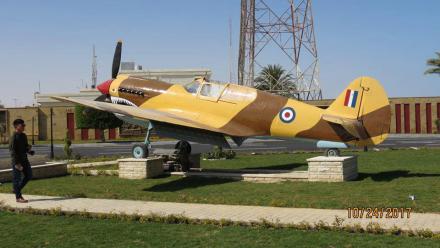
So it appears that the Kittyhawk’s fate is sealed. Even if the great gobs of emulsion and filler could be removed from it, the patina and uniqueness of the wreck have been utterly destroyed. Probably the greatest hope left for its long-term survival is that it can be bought by an aircraft restorer and rebuilt to flying condition.
But where is Spitfire PK664? Apparently it is still in a shed in Essex, appreciating in value day-by-day. Which would make Kennet Aviation the winner in this sad little saga.
Advertisements Share this:



